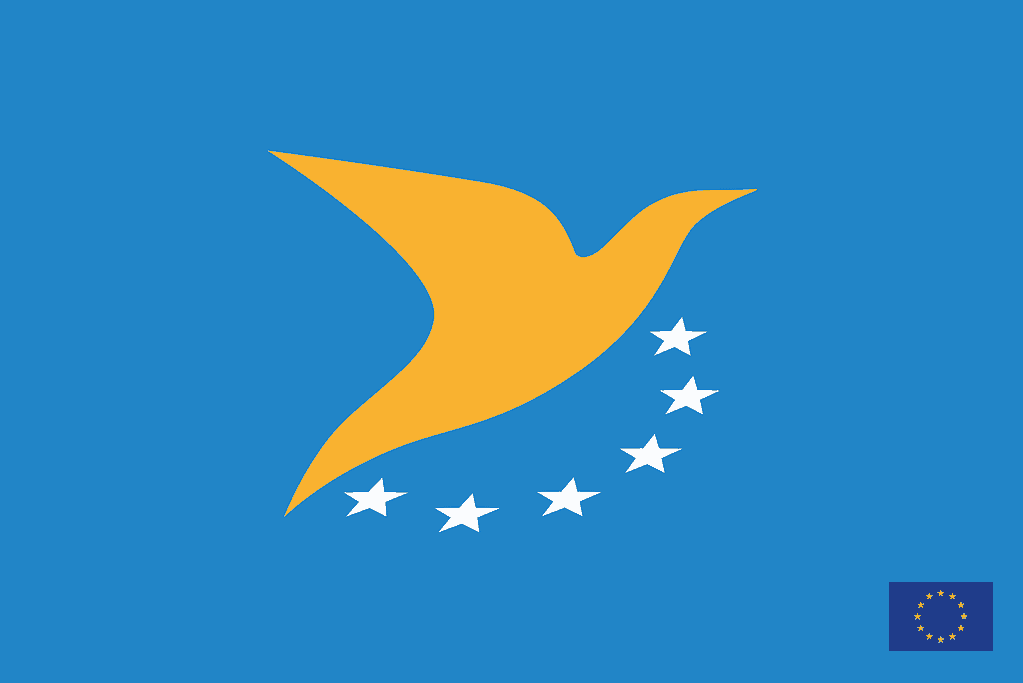Drone Laws in Palau
Hobbyist Drone Laws For Residents of Palau
Drone Operations in Palau are currently regulated.
- Hobbyist drone flights are allowed in Palau
- Hobbyist Palau drone pilot license is not required
- Hobbyist Drone registration is not required in Palau for hobbyists
- Drone Remote ID is not required in Palau for hobbyists
- Drone Insurance is not required but recommended for hobbyists’ drone operations in Palau
Read below for more details on Hobbyist Drone Laws in Palau and to find links to regulators and other credible sources!
Agencies Responsible for regulating drones in the Republic of Palau
Drone Regulator in Palau: Palau National Aviation Administration (PNAA)
The PNAA is a new agency put in place in November 2020 with a long list of mandates, including: “Issue Drone permit, Advisories for airspace use and directives to Domestic Operators to follow when there are activities that may cause flight safety and security”
UAS Laws – General rules for flying drones in Palau
The Palau agency responsible for drone safety, PNAA, has provided several internet-accessible details on flying for fun or work. The highlights are enumerated below. For more details go to the link above.
Are drones allowed in Palau?
According to PNAA, drone use is allowed in Palau, subject to PNAA regulations. Read on for more details.
Here are the most important rules to know for flying a drone in Palau:
The recreational use of UAS is the operation of an unmanned aircraft for personal interests and enjoyment. For example, using a UAS to take photographs for your own personal use would be considered recreational; using the same device to take photographs or videos for compensation or sale to another individual would be considered a commercial operation.
You should check with the Palau National Aviation Administration and Bureau of Aviation for further determination as to what constitutes commercial or non-hobby, non-recreational UAS operations.
Any person or persons who plan or want to operate Drone/UAS or take to the air any airborne object shall make a written request to the Palau National Aviation Administration for authorization or permit to operate or use Drone/UAS within Palau’s Navigable Airspace.
Compliance is mandatory.
- Unmanned aircraft must weigh less than 55 lbs. (25 kg).
- Visual line-of-sight (VLOS) only; the crewless aircraft must remain within VLOS of the remote pilot in command and the person manipulating the flight controls of the small UAS. Alternatively, the unmanned aircraft must remain within the VLOS of a visual observer.
- At all times, the small UAS must remain close enough to the remote pilot in command and the person manipulating the flight controls of the small UAS for those people to be capable of seeing the aircraft with vision unaided by any device other than normal corrective lenses.
- A small UAS may not operate over any person not directly participating in the operation, not under a covered structure, and not inside a covered stationary vehicle.
- Daylight-only operations, or civil twilight (30 minutes before official sunrise to 30 minutes after official sunset, local time) with appropriate anti-collision lighting.
- Must yield the right of way to other aircraft.
- May use a visual observer (VO) but not required.
- A first-person view camera cannot satisfy the “see-and-avoid” requirement but can be used as long as the requirement is satisfied in other ways.
- Maximum ground speed of 100 mph (87 knots).
- Maximum altitude of 400 feet above ground level (AGL) or, if higher than 400 feet (120 meters) AGL, remain within 400 feet (120 meters) of a structure.
- Minimum weather visibility of 3 miles (5 km) from the control station.
- Operations in Class G airspace are allowed with the required AFIS permission.
- No person may act as a remote pilot in command or VO for more than one unmanned aircraft operation at one time.
- No operations from a moving aircraft.
- There are no operations from a moving vehicle unless the operation is over a sparsely populated area.
- No careless or reckless operations, including drinking or using drugs.
- No carriage of hazardous materials.
- Requires preflight inspection by the remote pilot in command.
- A person may not operate a small unmanned aircraft if they know or have reason to know of any physical or mental condition that would interfere with the safe operation of a small UAS.
- Foreign-registered small unmanned aircraft are allowed to operate under PNAA Rules and Regulations.
- External load operations are allowed if the object being carried by the unmanned aircraft is securely attached and does not adversely affect the flight characteristics or controllability of the aircraft.
- Transportation of property for compensation or hire is allowed provided that:
- The aircraft, including its attached systems, payload, and cargo, weigh less than 55 pounds (25 kg) in total;
- The flight is conducted within a visual line of sight and not from a moving vehicle or aircraft; and
- Most of the restrictions discussed above are waivable if the applicant demonstrates that their operation can safely be conducted under the terms of a certificate of waiver.
- A remote pilot in command must:
- Make available to the PNAA, upon request, the small UAS for inspection or testing and any associated documents/records required to be kept under the rule.
- Report to the PNAA within ten days of any operation that results in at least serious injury, loss of consciousness, or property damage of at least $500.
- Conduct a preflight inspection to include specific aircraft and control station systems checks to ensure the small UAS is in a condition for safe operation.
- All UAS or Drone Operators must contact the Palau National Aviation Administration office at (680) 587-4363 or Aerodrome Flight Information Services (AFIS) of the Bureau of Aviation at (680) 587-3460 before any UAS or Drone operations within the airspace of Palau.
Notes for recreational drone pilots flying for fun in Palau
Follow the general rules listed above, but check for updates by visiting the regulator’s links provided.
Drone Regulations For Visitors To Palau
Drone Operations in Palau are currently regulated.
- Foreign visitor drone flights are allowed in Palau
- Foreign visitor drone pilot license is required
- Drone registration is required in Palau for visitors/tourists
- Drone Remote ID is not required in Palau for tourists
- Drone Insurance is not required but recommended for tourist drone operations in Palau
Read below for more details on Drone Laws in Palau for Visitors (Tourists) and to find links to regulators and other credible sources!
Note for Foreign Operator
Foreign-registered small unmanned aircraft are allowed to operate under PNAA Rules and Regulations.
Commercial Drone Laws For Residents of Palau
Drone Operations in Palau are currently regulated.
- Commercial drone flights are allowed in Palau
- Commercial Palau drone pilot license is not required
- Commercial Drone registration is not required in Palau for commercial drone operators
- Drone Remote ID is not required in Palau for Commercial Drone Operators
- Drone Insurance is required for commercial drone operations in Palau
Read below for more details on Commercial Drone Laws in Palau and to find links to regulators and other credible sources!
Notes for operating Commercial Drone Services in Palau
Follow the general rules listed above, but check for updates by visiting the regulator’s links provided.
Drone Rules For Government Drone Operators in Palau
Drone Operations in Palau are currently regulated.
- Government drone flights are allowed in Palau
- Government drone pilot license is required
- Drone registration is required in Palau for Government operations
- Drone Remote ID is not required in Palau for Government operations
- Drone Insurance is not required for Government drone operations in Palau
Read below for more details on Drone Laws Palau for Government Drone Operations and to find links to regulators and other credible sources!
Useful published information on flying drones in Palau
Here is a sample of what you might expect if you follow the drone laws and fly in Palau…
Authoritative Sources of Information on Palau Drone Laws
We will attempt to keep an updated list of online authoritative links to regulators and other official websites here:
- Drone Regulator Website: Palau National Aviation Administration (PNAA)
- Link To SUAS Laws: N/A
- No Fly Zone Maps/Locations: N/A
- UAV Registration Site: N/A
- Drone Operator Licensing Site: N/A
- Others: N/A
NOTE: This page is about the Regulation of Unmanned Aerial Vehicles: Small Unmanned Aerial Systems (SUAS), Small UAS, Remote Piloted Aerial Systems (RPAS), unmanned aerial vehicle (UAV), Unmanned Aerial System (UAS), and drone are interchangeable terms unless specified. Model Aircraft, toy, remote-controlled, and RC aircraft may be covered by the same regulations unless specified.
Find out why
We think you must use a Drone Preflight Checklist
And a Drone Post-flight checklist
Free Drone Flight Checklist PDF
This Drone Flight Checklist is better than others.
It’s free!
It includes both the preflight checklist and post-flight checklist
It’s an easy-to-use printable PDF that covers all your bases.
Traveling with a Drone?
Click here to read our Comprehensive Guide For Traveling With A Drone.
LET US CONNECT YOU
Calling All Drone Service Companies, Trainers, Tour Guides with Drone Experience
Contact Us with your website, email address and phone number using our Contact Page
We want to share your information with visitors who look for credible providers that follow the rules.
NOW IT’S YOUR TURN





Leave a Comment